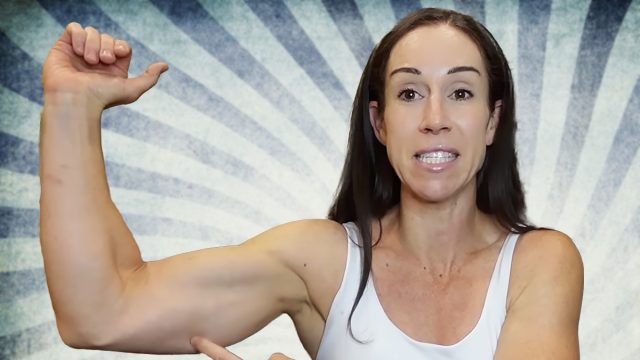5 Protein Mistakes Preventing Fat Loss According to Fitness Expert

Are you making these common protein mistakes? Fix them now for better results. You've done your research. You're eating more protein to support your weight loss journey. But despite your efforts, the scale isn't budging as much as you'd hoped. What gives? Meet Michelle Roots, a kinesiologist, personal trainer, and nutrition coach with over 18 years of experience helping people transform their bodies. "I've seen countless clients make the same protein mistakes that sabotage their fat loss results," Michelle explains. Discover these common pitfalls and learn how to avoid them to finally achieve the results you deserve.
Overlooking Total Calorie Intake
When people start tracking macros, they often become laser-focused on protein intake while neglecting their overall calories. "As important as protein is, if you're consistently eating in a calorie surplus, even just a few days per week, you'll still store body fat and see limited fat loss results," Michelle warns in her post.
The Fix: Prioritize protein but track your total calorie intake as well. Even "healthy" protein shakes with multiple ingredients like fruits, seeds, yogurt, and milk can quickly become 500-calorie bombs that derail your deficit.
Relying Too Heavily on Supplements
It's easy to reach for protein powders and bars when you're busy, but this approach has drawbacks. "Many people overuse supplements to hit their daily protein goal without focusing on whole foods that provide additional nutrients and greater satiety," Michelle points out.
The Fix: Limit yourself to 1-2 scoops of protein powder or supplements daily, getting the rest from whole food sources like chicken, fish, tofu, salmon, and Greek yogurt. "Meal prep is your best friend here," Michelle suggests. "I cook protein in batches at the beginning of the week so it's ready to add to quick meals instead of reaching for another shake."
Ignoring Protein Timing
Trying to consume all your protein in just one or two meals is a common mistake. "I often see people eat minimal protein at breakfast and lunch, then realize they need to consume 90 grams at dinner to meet their daily goal—which usually results in failure," Michelle says.
The Fix: Spread your protein intake throughout the day. For example, if your daily goal is 120 grams, aim for 30 grams at each main meal and divide the rest between snacks. This approach supports muscle protein synthesis, keeps you feeling full, and reduces cravings between meals.
Neglecting Variety in Protein Sources
Relying on just chicken, eggs, and protein powder creates two problems: nutrient imbalances and boredom. "It's going to feel more like a diet, and you're going to fall off track because it's not realistic long-term," Michelle explains.
The Fix: Rotate between different protein sources including lean ground beef, turkey, chicken, fish, and plant-based options like lentils and edamame. Don't hesitate to combine protein sources in a single meal—add beans to your chicken salad or edamame to your stir-fry to boost the protein content while adding fiber and nutrients.
Not Balancing All Macros
Focusing exclusively on protein while neglecting carbs and fats leads to low energy, poor recovery, and fewer nutrients overall. "If you're strictly focused on protein, you're often missing fruits, vegetables, and whole grains, which affects your digestion and satiety," Michelle cautions.
The Fix: Calculate appropriate amounts of all three macronutrients based on your goals. Pair your protein with quinoa, whole grains, fruits, vegetables, and healthy fats like avocado. "This balanced approach will improve your energy levels, workout performance, recovery, and digestion," Michelle recommends.
Implement these fixes to your high-protein diet, and you'll be well on your way to breaking through plateaus and achieving the fat loss results you've been working toward.




